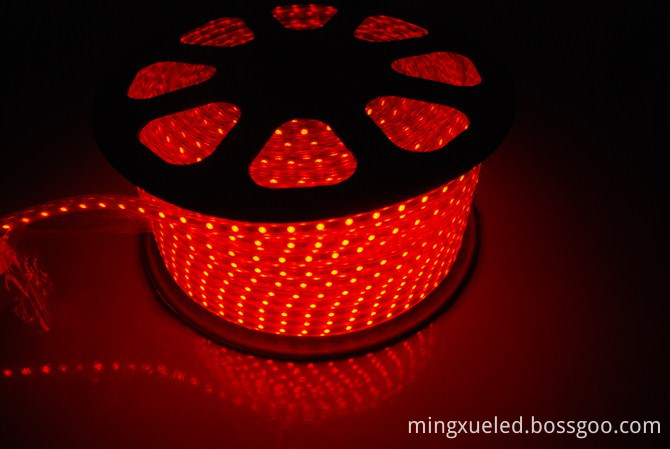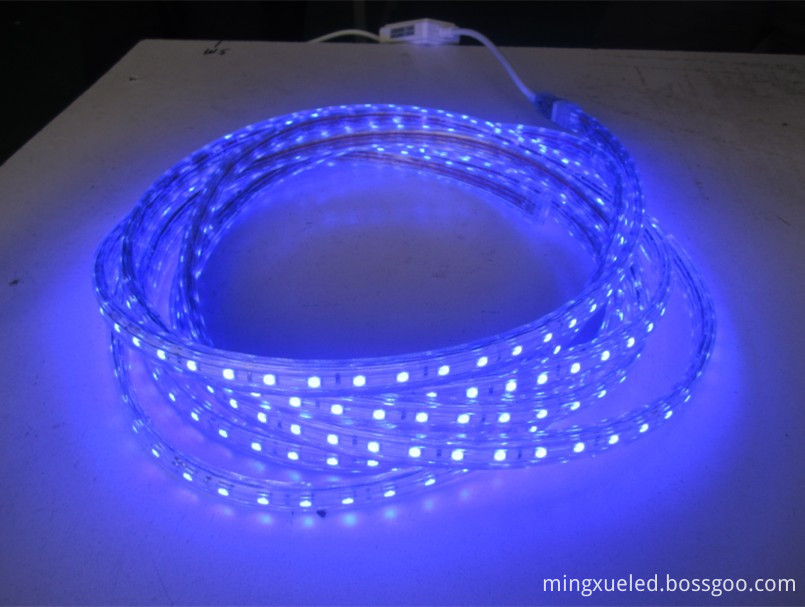AC110V LED Tape Light high Voltage led strip(AC110v led strip), the composition of the material: type 3528, 5050 LED lamp beads, FPC flexible circuit boards, resistors, solder paste, silicone plugs, plastic casing, wires and so on. High-pressure light bar length: up to 100 meters, the unit can be cut every meter.
Alternatively neon tubes.
Features:
AC110V LED Tape Light Use: bars, hotels, hostels, decorative lighting, background lighting.
Installation ways:
â‘ AC110V LED Tape Light of Bandwidth four-wire light about 22mm, a thickness of about 8mm, weight about 0.25kg / m (4 meter by Kg)
Mingxue Optoelectronics Co.,Ltd. has apply the I S O 9 0 0 1: 2 0 0 8 international quality management system certificate, For AC110V LED Tape Light, we apply the CE, RoHS and SAA certificate for our led lighting product.
AC110V LED Tape Light Ac110V Led Tape Light,Energy Saving Led Tape Light,Led Tape Light For Kitchen,Small Led Tape Light Shenzhen Mingxue Optoelectronics CO.,Ltd , https://www.led-lamp-china.com
Road lighting should consider the object being photographed
Although LEDs were invented in the West and were made by the Japanese in their key contributions to blue LEDs, they are widely used in general lighting. However, in the promotion of LED Outdoor Lighting applications, China has been far ahead of the world. With the wide application of LED street lamps, not only the relevant manufacturers, but also many leaders are familiar with the various parameters of LED street lamps. This is very rare in other countries. It fully embodies the strong support of the leaders at all levels in China for the low-carbon energy-saving industry. There are many reports and discussions on streetlight design in various seminars or lighting-related websites or journals.
However, these discussions seem to ignore the characteristics of the object being illuminated and the material of the pavement itself.
The purpose of road lighting is to increase the safety, flow and comfort of road traffic. By illuminating the road surface and its surroundings, the target on the road surface is seen by the driver. For the driver, it is to illuminate the road. The road surface brightness experienced by the driver depends on two factors, the light source that illuminates the road and the reflective properties of the road material. We observed that the road surface has a certain brightness because the light emitted by the street lamp is reflected by the road material and enters the human eye. The main manifestation of the useful visual information that the driver obtains from the environment is the difference in brightness between the scene and the road surface. That is to say, the driver can distinguish that there are other objects on the road surface other than the road surface, mainly depending on whether the object is brighter or darker than the road surface. The contrast between the object and the road surface depends on the reflection characteristics of the object and the road surface.
All countries attach great importance to the measurement of the actual road surface brightness coefficient. Furukawa et al. investigated the changes in reflectivity of the two types of pavement materials commonly used in Japan and the newly developed drainage pavements in the first nine to nine years after laying. Although Australia and New Zealand have already measured the road surface brightness coefficient in 1982, with the wide application of various new pavement materials, the brightness coefficient has been re-measured in 2009. The results of the re-measurement show that the actual road surface brightness coefficient is much lower than the original measurement value, that is to say, the road surface illumination designed according to the original data cannot achieve reasonable brightness requirements.
The United States, the United Kingdom, Norway, Finland and other countries have also carried out corresponding testing work in recent years. Refining the brightness coefficient of different pavement materials in different regions and different climates is of great significance for the energy-saving optimization design of each region. Regrettably, although China is the second country with the largest number of highways in the world, we do not have extensive survey data on the characteristics of road reflection in China. At present, Zhejiang University and Shenzhen Lighting Environmental Management Center are cooperating to sample and measure the pavement materials in Shenzhen, which is the first actual measurement of the road surface brightness reflection coefficient in China.
Road lighting quality evaluation see brightness
Historically, illuminance and brightness are the two most commonly used light metrics for evaluating road lighting quality. Before 1940, the quality of road lighting was mainly evaluated by illuminance. After 1940, people realized that relying solely on illuminance could not reflect the actual lighting effect.
For example, because the dry and wet road surface will greatly change the light reflection characteristics of the road surface, under the same street lighting, the visual conditions for driving in rainy days are far less than those of sunny days. Why is the human skin color black and white in the same sunlight? The reason is that the reflectance of light varies from person to person. To achieve the same brightness for different skin types, it is clear that people with darker skins need more illumination. The same is true for road lighting. Whether the pavement material is cement or asphalt, and what type of cement or asphalt has different requirements for the light distribution of street lamps.
At present, most of the research work in China focuses on the light source, that is, the distribution of light distribution of street lamps, etc., on the quality of road lighting. The rapid spread of photodiodes (LEDs) has added new degrees of freedom and optimized parameters to road lighting design. Since the LED itself has a small illuminant surface, a flexible light distribution design can be realized in combination with the secondary lens, so that the spot shape perfectly matches the shape of the road, and the uniform distribution of the illuminance of the road surface is realized. But people may not realize that even distribution of illumination is not our correct goal.
At present, the main international road lighting evaluation indicators are: average road surface brightness, road surface brightness uniformity and longitudinal uniformity. Illuminance is only used to evaluate the environmental ratio, ie the lighting evaluation of the pedestrian walkway. The situation in our country is different. There are still many departments that use illuminance as the evaluation method of lighting quality. The illuminance evaluation is still included in many newly developed standards.
Since brightness is the correct evaluation index for road lighting design, it is necessary to combine the light distribution of street lamps with the reflection coefficient of pavement materials in the road lighting design process to achieve accurate road lighting design. If the brightness coefficient used in the design is lower than the actual one, it will increase the energy consumption and construction cost of the road lighting. Otherwise, the designed street lamp configuration will not meet the standard required brightness, increasing the probability of traffic accidents. Only by understanding the reflective characteristics of the road can the street light's light distribution design and pole configuration be optimized to provide a safe, comfortable and energy-saving lighting environment.
For more information, please refer to the September issue of "High-tech LED-Technology and Applications" 


Easy to install.
5050 Ac110V Led Tape Light high-voltage lights
5050 AC110V LED Tape Light high-voltage lights
2. Products suitable for installation in narrow space inside;
3. AC110V LED Tape Light is for Each one meter a unit can arbitrarily cut off along the tangent above, without damaging other parts of the existing products of 50 meters per roll, you need any length can be customized.
4. With low power consumption, generate less heat, no glare, impact resistance and other characteristics. 110-volt power supply.

â‘¡ AC110V LED Tape Light four-wire lights with a total of four wire, three rows of lights (note instead of four rows of lights Oh ~ ~), each row of one meter 24 lights, 24 * 3 = 72. Because each lamp beads power is 0.05W, the power lights with 72 bead is: 72 * 0.05 = 3.6W.


Pavement brightness coefficient and LED street light distribution design
[Source: "High-tech LED - Technology and Applications" September issue Zheng Xiaodong]